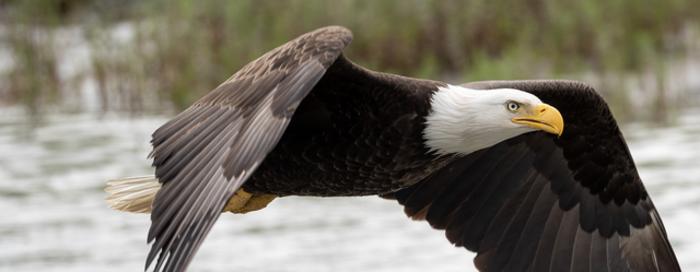Denver/July 6, 2023 – A new published paper in the journal Wildlife Society Bulletin states that, despite the resurgence of bald eagle populations, exposure to lead ammunition fragments in wild game gut piles and carcass parts is not only sickening and killing bald eagles but also is making the birds more susceptible to other dangers.

Credit: EEI_Tony
Denver/July 6, 2023 – A new published paper in the journal Wildlife Society Bulletin states that, despite the resurgence of bald eagle populations, exposure to lead ammunition fragments in wild game gut piles and carcass parts is not only sickening and killing bald eagles but also is making the birds more susceptible to other dangers.
“Bald eagles are an iconic American species,” said Krysten L. Schuler, the principal investigator of the Morris Animal Foundation-funded study and Assistant Research Professor at Cornell University. “Despite the apparent population rebound through major conservation efforts, our work showed that environmental lead sickens and kills bald eagles to such a degree that it makes the populations vulnerable to other threats such as avian influenza or wind energy development.”
Schuler highlighted the innovative methodology used for the study, developed by mathematician Brenda Hanley, who specializes in population demographics. Using data from seven Northeastern states, the research ultimately illustrated that lead poisoning has not stopped eagle recovery but affects their ability to withstand additional threats.
Schuler acknowledged the vital support from the Foundation, which enabled researchers to hire Hanley and develop the new modeling tool required to address these complex issues, particularly where data is limited.
Kevin Hynes, a wildlife biologist for the New York Division of Fish and Wildlife and a researcher involved in the study, noted that lead poisoning has long been recognized as a common cause of eagle deaths, accounting for more than 10% of eagle fatalities. However, thanks to the new modeling approach, researchers now know that lead is also hindering continued growth of eagle populations.
“This is an environmental problem with a currently available and low-tech solution: A simple switch to non-lead ammunition for hunting will eliminate lead ammunition fragments in gut piles and carcass parts, making them unavailable to eagles and other scavengers,” Hynes said.
About Morris Animal Foundation
Morris Animal Foundation’s mission is to bridge science and resources to advance the health of animals. Founded in 1948 and headquartered in Denver, it is one of the largest nonprofit animal health research organizations in the world, funding more than $149 million in nearly 3,000 critical studies across a broad range of species. Learn more at morrisanimalfoundation.org.
Media Contact: Annie Mehl
Journal
Wildlife Society Bulletin




